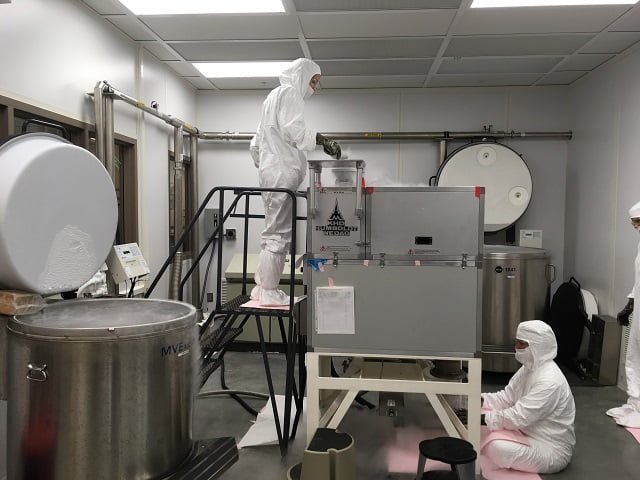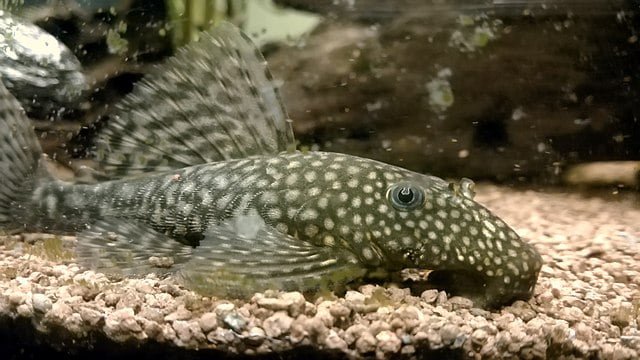
by NIST
At your local supermarket, you can usually find all sorts of seafood on display, but it’s sometimes hard to know if it’s correctly labeled. If you purchase seafood marked as wild-caught salmon, for example, how do you know that you’re not actually getting cheaper farm-raised salmon, or even an entirely different kind of fish?
Researchers at the National Institute of Standards and Technology (NIST) are helping to address this concern with new salmon and shrimp reference materials — fresh-frozen samples of seafood that have been thoroughly ground down into a mixture and meticulously measured. In addition to being useful for industrial food labs, the reference materials will help the U.S. Food and Drug Administration (FDA) and U.S. Customs and Border Protection agencies assess whether imported salmon and shrimp are authentic.
“There was interest expressed by stakeholders, including customs officials, about the authenticity of seafood products. When we receive imported goods, how do we know they are what they claim to be?” said NIST biologist Debra Ellisor.
NIST researchers chose salmon and shrimp because they are among the top seafoods consumed in the U.S. The researchers created reference materials for wild-caught and farm-raised (aquacultured) versions of shrimp and coho salmon, a species found in the Pacific Ocean. Aquacultured salmon and shrimp are typically less expensive to produce compared to wild-caught, which require more resources, such as fuel for boats.
If producers substitute farmed shrimp for wild-caught, they can earn higher profits at a lower cost, though fraudulently if they don’t tell customers. The new reference materials can help food inspectors assess the authenticity of seafood, which can then help verify where the seafood was caught or produced.
The reference materials help to authenticate shrimp and salmon in different ways.
“For shrimp, genetic analysis methods are used because wild-caught shrimp species that are found in the U.S. market or industry are not typically found in the U.S. aquaculture market. The species will tell you the source,” said Ellisor.
For salmon, it’s a different story. Scientists can look at an analysis of the ratios of omega-3 to omega-6 fatty acids found in the salmon’s flesh. The aquacultured salmon reference materials have twice the amount of omega-3 fatty acids compared to wild-caught.
Stay Always Informed
Join our communities to instantly receive the most important news, reports, and analysis from the aquaculture industry.
“We know research shows fatty acid profiles differ in salmon. The measurement itself is straightforward. Most food labs can use that method. If it’s not accurate or precise, they may not be able to tell the difference between the two. If we can recognize a benchmark of wild-caught or aquaculture salmon, then we can give that to the labs,” said NIST chemist Benjamin Place.
Scientists in industry can ultimately use the reference materials to validate their methods, said Ellisor.
In order for NIST researchers to develop the reference materials, they needed to get seafood from verified sources. They worked with the National Oceanic and Atmospheric Administration (NOAA) Northwest Fisheries Science Center Forensic Laboratory to obtain salmon off the coast of Alaska as well as farm-raised salmon from a river-based aquaculture facility in Washington state. NIST researchers also collaborated with NOAA researchers at the Hollings Marine Laboratory in Charleston, South Carolina, to get authentic wild-caught shrimp samples off the coast of South Carolina and aquacultured shrimp from a land-based facility in Alabama.
Researchers prepared and thoroughly measured the samples to develop the reference materials, which consist of frozen finely ground seafood bottled into glass jars. Their analysis included fatty acid profiles, crude protein levels and the specific chemical compounds in each material.

The reference materials can also be used for food safety and detecting allergens as well as testing for metals or other contaminants. And they come with a certificate of analysis, which contains genetic information on the shrimp and salmon.
“If a food processing place can use the reference material to say this is the species that it is, then consumers can have more confidence. You now know when you go to a store, you can have full faith the seafood product is the species it says it is and that the labels are true,” said Place.
The new reference materials, Wild-caught Coho Salmon (RM 8256), Aquacultured Coho Salmon (RM 8257), Wild-caught Shrimp (RM 8258) and Aquacultured Shrimp (RM 8259), are available now for purchase through the NIST Store.
Editor at the digital magazine AquaHoy. He holds a degree in Aquaculture Biology from the National University of Santa (UNS) and a Master’s degree in Science and Innovation Management from the Polytechnic University of Valencia, with postgraduate diplomas in Business Innovation and Innovation Management. He possesses extensive experience in the aquaculture and fisheries sector, having led the Fisheries Innovation Unit of the National Program for Innovation in Fisheries and Aquaculture (PNIPA). He has served as a senior consultant in technology watch, an innovation project formulator and advisor, and a lecturer at UNS. He is a member of the Peruvian College of Biologists and was recognized by the World Aquaculture Society (WAS) in 2016 for his contribution to aquaculture.




